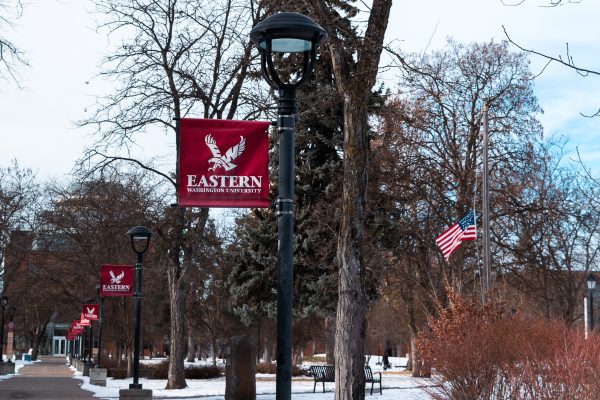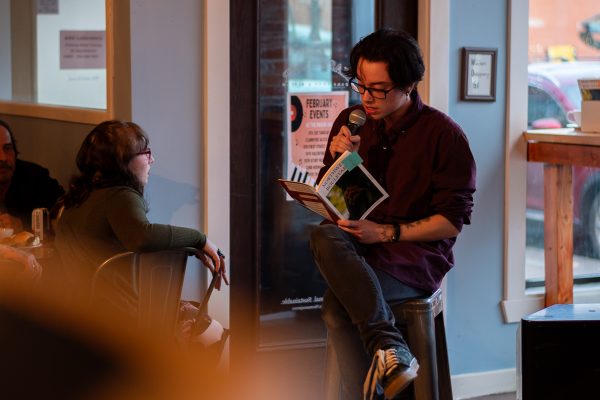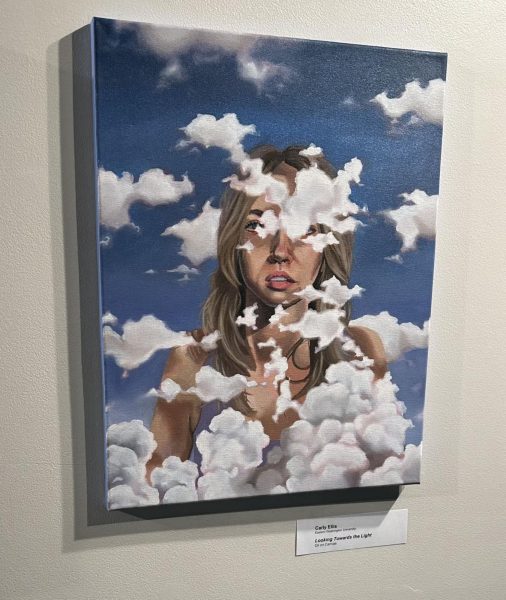“Song of Silence”
Downtown Student Gallery starts year of by hosting the exhibit “Song of Silence”
January 10, 2018
Kyrgyzstan embroidered tapestries (tush kuiz) from the Anne Marie Burk’s collection in Spokane will curate the Downtown Student Gallery. The exhibit will began Jan. 8 and will run through Feb. 9. Gallery hours are Monday through Friday noon-5 p.m.
Burk contacted the EWU anthropology department a few years ago. She was interested in showing the textiles for students specifically. Back then the department did not have anywhere to show it or anyone whose focus worked with them.
Senior Angeline Nesbit started working with Dr. Michael Zukosky in the department and suggested she contacted Burk because Nesbit was working on a project about the Eurasia Bronze Age and the display of Eurasian art and digital collections.
“I was looking for an opportunity to get hands on experience, so this is my opportunity to get to work in a gallery with anthropological artifacts from Central Asia,” said Nesbit. “I haven’t really focused on Kyrgyzstan but it is pretty interesting to learn. They are fairly similar to other nomadic cultures in the area and they share a lot of things, you can see that in the designs they use. That area has a lot of interaction and there is a lot of complexity in the way that they exchange culture, design and art.”
The embroideries also known as wall hangings can be considered visual prayers.
“Prayers for protection and prosperity, for honoring ancestors and culture and prayers for wisdom,” Burk said.
Nomadic women spanning over 100 years created the embroideries. These hangings are displayed in yurts (tents) and meant to be the focal point for the visitors and families, reminding all who entered that these people were proud of their culture and history.
The more traditional tush kyiz are made out of wool thread.
“They tend to use kind of whatever they can get their hands on,” said Nesbit. “They are really labor intensive and can take years to complete. You’ll see if you go to the show how small the stitching is, it is really intense.”
Burk lived and taught in Kyrgyzstan for two years. At the time she was there the younger people were not appreciating the work and they were selling the wall hangings. Burk was interested and put the word out so people began to approach her with their tapestries.
Kyrgyz nomadic philosophy was suppressed in Soviet times and it is visible on these wall hangings.
“That culture and tush kyiz were ridiculed in soviet times, seen as relics of a time best forgotten,” said Burke. “I can only hope that the Kyrgyz of today will learn to honor their past and begin to understand what these embroideries meant to their ancestor, a visual representation of philosophy and belief, a visual prayer for their people.”
An artist reception will be held Thursday, Jan. 25 from 4:30-6 p.m. The student gallery is free and open to the public.





![Simmons said the biggest reasons for her success this year were “God, hard work, and trusting [her] coach and what she has planned.”](https://theeasterner.org/wp-content/uploads/2024/05/image1-1-1200x800.jpg)







